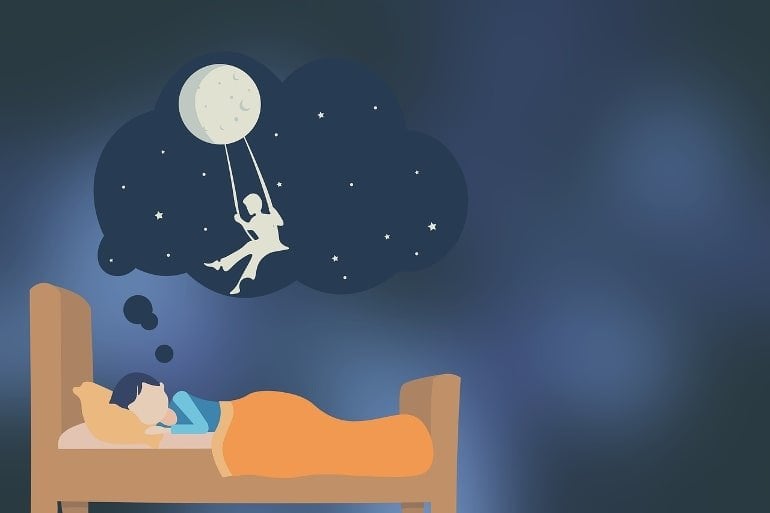Summary: Study reveals the underlying mechanisms that strengthen and facilitate the formation of new relational memories during sleep.
Source: UCSD
Relational memory is the ability to remember arbitrary or indirect associations between objects, people or events, such as names with faces, where you left your car keys and whether you turned off the stove after cooking but before you left the house.
Previous research has established that animal and human memory benefits from sufficient, quality sleep.
In a new study, published May 25, 2022 in the Journal of Neuroscience, Maxim Bazhenov, PhD, professor of medicine at University of California San Diego School of Medicine, and Timothy Tadros, a graduate student in his lab, describe the underlying mechanisms that strengthen or create new relational memories during sleep.
The authors developed an artificial model of two regions of the brain: the thalamic (involved in earlier sensory processing) and the cortical (involved in memory, learning and decision-making).
The model was capable of simulating two major brain states: awake when neurons are spontaneously active and optimized to process sensory input and deep sleep when intrinsic oscillations of electrical activity are generated, such as slow-waves.
The properties of the network model could be changed to promote transitions between awake and asleep activity, similar to what the biological brain does every day.
In the cortical region, connections between the neurons were permitted to become stronger or weaker based on their activity, known as synaptic plasticity, which reflects the primary known biological mechanism for how memories are formed or erased.
“We modelled the cortex after visual processing, with one cortical layer representing primary visual cortex and another cortical layer representing associative cortex,” said Tadros.
“Every time one sees the same object, roughly the same neurons in the visual cortex would be active. If a person sees two objects in the same context, then these associations might be learned in the associative cortex by strengthening connections between neurons that represent each of the two objects.”
The scientists trained the network in its awake mode to learn such direct associations, such as A+B or B+C but not A+C, then discovered that in the sleep mode, the model formed indirect associations: A+C.
“This happened because during sleep the neurons representing all three related items (A, B and C) spontaneously fired in close temporal order, a phenomenon called sleep replay, which triggered synaptic plasticity and led to formation of strong synaptic connections between all these neurons,” said Bazhenov.
“Therefore, after sleep, activating any one group, such as A, activated all other related groups, such as B and C.”

While primarily conceptual, the researchers said the work has real-world implications.
“One important real-world impact of the study is in informing future studies of disease, such as schizophrenia and autism spectrum disorder,” said Bazhenov. “Studies have shown that people with these conditions perform worse on relational memory tasks and also have disrupted sleep, specifically slow-wave sleep.
“Our study suggests that focusing on improving slow-wave sleep in order to alleviate some of the cognitive symptoms associated with these conditions may be a more fruitful path forward than focusing on the cognitive symptoms exclusively.”
The authors also noted that memory function and sleep quality decline with age, but current or new technologies that augment sleep oscillations may help protect and improve memory function in older adults.
About this sleep and memory research news
Author: Scott La Fee
Source: UCSD
Contact: Scott La Fee – UCSD
Image: The image is in the public domain
Original Research: Closed access.
“Role of Sleep in Formation of Relational Associative Memory” by Timothy Tadros and Maxim Bazhenov. Journal of Neuroscience
Abstract
Role of Sleep in Formation of Relational Associative Memory
Relational memory, the ability to make and remember associations between objects, is an essential component of mammalian reasoning. In relational memory tasks, it has been shown that periods of offline processing, such as sleep, are critical to making indirect associations.
To understand biophysical mechanisms behind the role of sleep in improving relational memory, we developed a model of the thalamocortical network to test how slow-wave sleep affects performance on an unordered relational memory task.
First, the model was trained in the awake state on a paired associate inference task, in which the model learned to recall direct associations. After a period of subsequent slow-wave sleep, the model developed the ability to recall indirect associations.
We found that replay, during sleep, of memory patterns learned in awake increased synaptic connectivity between neurons representing the item that was overlapping between tasks and neurons representing the unlinked items of the different tasks; this forms an attractor that enables indirect memory recall.
Our study predicts that overlapping items between indirectly associated tasks are essential for relational memory, and sleep can reactivate pathways to and from overlapping items to the unlinked objects to strengthen these pathways and form new relational memories.
Significance Statement
Experimental studies have shown that some types of associative memory, such as transitive inference and relational memory, can improve after sleep.
Still, it remains unknown what specific mechanisms are responsible for these sleep-related changes. In this new work, we addressed this problem by building a thalamocortical network model that can learn relational memory tasks and that can be simulated in awake or sleep states.
We found that memory traces learned in awake were replayed during slow-waves of NREM sleep and revealed that replay increased connections to and from overlapping memory items to form new relational memories.
Our work discovered specific mechanisms behind role of sleep in associative memory and made testable predictions about how sleep augments associative learning.






